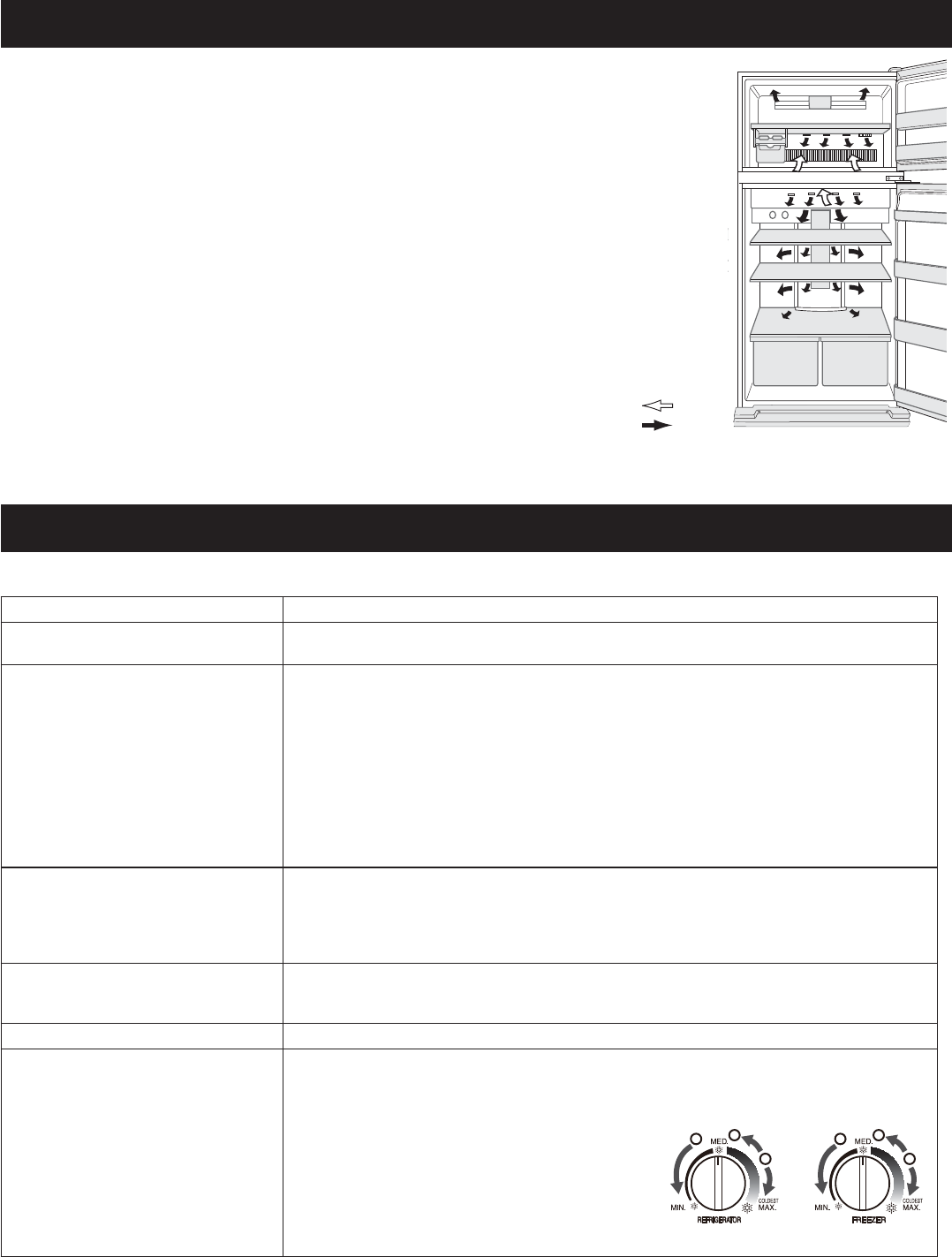
8
STORING FOOD
IN
OUT
BEFORE YOU CALL FOR SERVICE
Refrigeration reduces the rate of food spoilage.
To maximise the shelf life of perishable food products,
ensure that the food is of the freshest possible quality.
The following is a general guide to help promote longer food
storage.
Ensure all cooked food is wrapped securely or placed in an •
airtight container.
To minimize moisture loss, fruit and vegetables should be •
loosely enclosed in a plastic material (e.g. wrap, bags) and
place in the fruit and vegetable crisper.
Eggs should be stored in the Egg tray.•
Evenly place the food on the shelves to allow the cooling •
air to circulate efficiently.
Hot foods should be cooled before storing. Storing hot •
foods increases the temperature in the unit and increases
the risk of food spoilage.
Do not block the outlet and inlet of the cool air circulating •
circuit with foods or containers; otherwise the foods will not
be evenly cooled throughout the refrigerator.
Keep the door securely closed.•
Do not place food directly in front of cold air
outlet. This may lead to the food freezing.
For best freezing
Quality of foods should be •
fresh.
Freeze small quantities •
of food at a time to freeze
them quickly.
Food should be properly •
sealed, sealed tightly or
covered.
Evenly place the food in •
the freezer.
Label bags or containers •
to keep an inventory of
frozen food.
Before you call for service, check the following points.
Problem Solution
The outside of the cabinet is hot
when touched.
This is normal. The hot pipe is in the cabinet in order to prevent condensation
generation.
When there is refrigerator noise. It is normal for the refrigerator to produce the following sounds.
Loud noise produced by the compressor when operation starts •
--- Sound becomes quieter after a while.
Loud noise produced once a day by the compressor •
--- Operating sound produced immediately after automatic defrost operation.
Sound of fl owing fl uid (gurgling sound, fi zzing sound) •
--- Sound of refrigerant fl owing in pipes (sound may become louder from time to
time).
Cracking or crunching sound, squeaking sound •
--- Sound produced by expansion and contraction of inner walls and internal parts
during cooling.
Frosting or condensation
generation occurs inside or
outside the refrigerator.
This may occur in one of the following cases. Use a wet cloth for wiping frost and a
dry cloth for wiping condensation.
When the ambient humidity is high.•
When the door is frequently opened and closed.•
When food containing plenty of moisture is stored. (Wrapping is required.)•
The foods in the refrigerator
compartment freeze.
Is the refrigerator operated for a long time with temp. control set at MAX?•
Low ambient temperature may cause food to freeze even if refrigerator temp. control •
is set to MIN.
Noticeable odours. Wrapping is required for food with strong odours.•
Door alarm does not stop. If the door alarm does not stop after closing all doors, it is a defect. •
Contact the SHARP service center for service.
Method of stopping the door alarm temporarily.
Adjust both temp. control knobs at the same time as following steps.
(Adjust
1
~
3
within 20 seconds)
1
Adjust to MIN
2
Adjust to MAX
3
Return to MED
The door alarm will sound again after approximately 2 days.•
If you still require service contact your SHARP Approved Service Centre.
SHARP Approved Service Centre locations can be found in the Support area of our website:
Australia : http://www.sharp.net.au
New Zealand : http://www.sharp.net.nz
1
2
3
1
2
3














